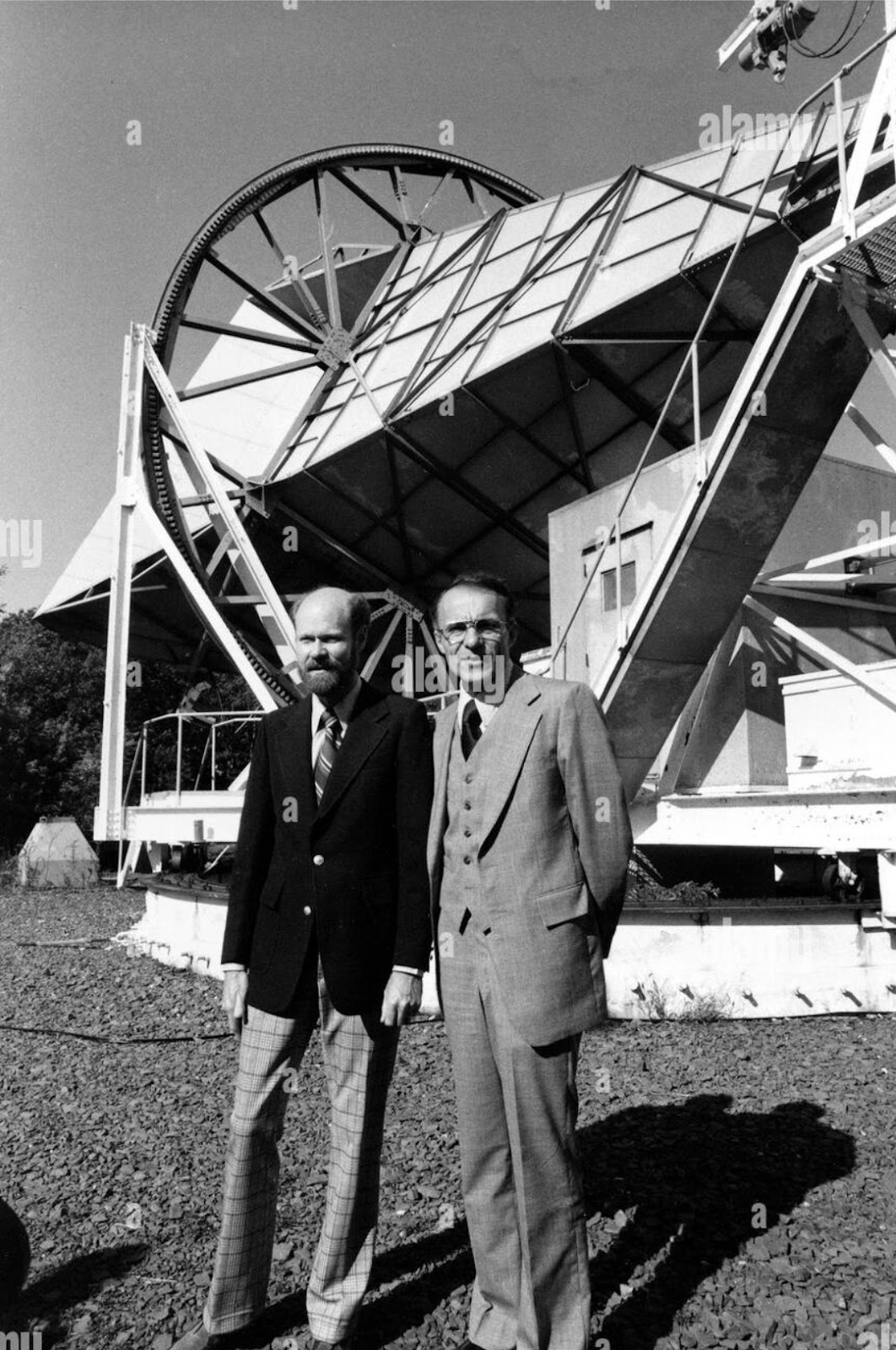A Measurement of Excess Antenna Temperature at λ = 7.3 cm (Review)
“My argument," Dr. Penzias concluded, “is that the best data we have are exactly what I would have predicted, had I had nothing to go on but the five books of Moses, the Psalms, the Bible as a whole.”- Penzius NYT
This journal entry details the measurement of excess antenna temperature at a wavelength of λ = 7.3 cm. The experiment aims to quantify the additional thermal noise experienced by the antenna beyond the inherent thermal noise of the environment. This excess temperature can be attributed to various factors, including ohmic losses in the antenna components and external sources radiating at the specific wavelength.
Introduction
Radio astronomy relies on the detection of faint electromagnetic signals originating from celestial objects. Sensitive antennas are employed to capture these signals, but their reception is hampered by thermal noise. This noise originates from the random thermal motion of electrons within the antenna and its surrounding environment. It manifests as a fluctuating voltage across the antenna output, limiting the minimum detectable signal strength.
Excess Antenna Temperature
The total antenna noise temperature (T_A) can be expressed as the sum of two components:
T_sky: The temperature due to the cosmic background radiation and any astronomical signal present at the observed wavelength.
T_rec: The receiver noise temperature, which accounts for the inherent noise generated by the receiver circuitry.
However, in practical scenarios, the measured antenna temperature (T_m) often exceeds the expected value based solely on T_sky and T_rec. This discrepancy is attributed to excess antenna temperature (T_ex), which arises from various sources:
Ohmic losses: When current flows through the antenna conductors, some energy dissipates as heat due to the resistance of the material. This heating contributes to excess antenna temperature.
Spillover losses: Imperfect antenna design can lead to some of the received radiation being reflected back into the environment. This "spilled over" radiation does not contribute to the desired signal and adds to the overall noise level.
External noise sources: The environment surrounding the antenna might contain radiating objects at the observed wavelength. These sources can inject additional noise into the antenna system, elevating the measured temperature.
Measurement Setup
The experiment to measure the excess antenna temperature involves a carefully designed setup:
Antenna: A well-calibrated antenna with a known gain (G) at the wavelength of interest (λ = 7.3 cm) is used. The antenna should be optimized for minimal ohmic losses and spillover.
Noise source: A calibrated noise source with a known temperature (T_noise) is employed to inject a reference noise signal into the antenna. This source provides a controlled way to quantify the system's response to noise.
Radiometer: A radiometer is a sensitive receiver designed specifically for measuring weak radio signals. It amplifies the received signal from the antenna and filters out unwanted frequencies. The radiometer output voltage (V_out) is proportional to the total antenna temperature (T_m).
Data Acquisition
The following steps outline the data acquisition process:
With the antenna pointed towards a region devoid of strong radio emission (cold sky), the radiometer output voltage (V_cold) is recorded. This voltage corresponds to the combined noise from T_sky and T_rec.
The calibrated noise source is activated, and its output is injected into the antenna. The radiometer output voltage (V_hot) with the noise source turned on is measured.
The noise source is deactivated, and the radiometer output voltage (V_cold) is measured again to ensure minimal drift in the system during the measurement.
Error Analysis
The accuracy of the measured T_ex depends on various factors:
Calibration accuracy of the noise source and antenna gain.
Stability of the radiometer system.
Environmental factors that might affect the noise level during measurement (e.g., radio frequency interference).
A thorough analysis of these factors and their contributions to the overall uncertainty is crucial for a robust interpretation of the results.
Conclusion
By measuring the excess antenna temperature, we gain valuable insights into the performance of the antenna system. Identifying and mitigating the sources of excess temperature can lead to improved sensitivity and better detection of faint astronomical signals.
A Landmark Discovery: Unveiling the Cosmic Microwave Background
The seemingly innocuous title, "A Measurement of Excess Antenna Temperature at λ = 7.3 cm" (Penzias & Wilson, 1965), veiled a groundbreaking discovery that revolutionized cosmology. This paper reported the detection of a faint, isotropic microwave radiation permeating the universe. This ubiquitous signal, later dubbed the Cosmic Microwave Background (CMB), holds profound implications for the Big Bang theory.
Penzias and Wilson, while calibrating their radiometer for a different experiment, encountered an unexplained excess temperature. After meticulously eliminating instrumental noise, they were left with a persistent signal – the CMB. The wavelength (λ) of 7.3 cm corresponded to the peak radiation predicted for a universe that originated from a hot, dense state, as proposed by the Big Bang model.
The CMB's uniformity across the sky contradicted the steady-state theory, the prevailing cosmological model at the time. This theory envisioned a continuously creating universe with no beginning or end. The steady-state model couldn't explain the pervasive CMB radiation, a remnant glow from the Big Bang's fiery past.
The discovery of the CMB provided crucial observational evidence for the Big Bang. It demonstrated that the universe was once incredibly hot and dense, and has since been expanding and cooling. The CMB's detailed properties, measured with ever-increasing precision by subsequent missions like COBE and WMAP, have become a cornerstone for Big Bang cosmology.
The detection of the CMB wasn't just a singular finding; it was the culmination of theoretical groundwork laid by scientists like George Gamow and Ralph Alpher. Their calculations predicted a leftover radiation from the Big Bang, but the technology to observe it wasn't available until Penzias and Wilson's serendipitous discovery.
The CMB's discovery wasn't immediate validation for the Big Bang. Further observations and refinements to the theory were needed. However, it marked a turning point, offering the first concrete evidence for the universe's origin story. Today, the CMB remains a powerful tool for cosmologists, offering insights into the universe's age, composition, and evolution, solidifying the Big Bang as the dominant cosmological paradigm.




Comments
Post a Comment